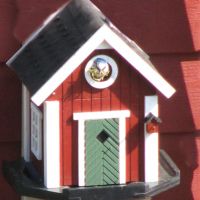
Wyvern
Wyvern
About
- Username
- Wyvern
- Joined
- Visits
- 3,134
- Last Active
- Roles
- Member
- Points
- 5,367
- Rank
- Cartographer
- Badges
- 24
-
City locations
-
New Commission. Ghorfar
"The png has no lines, thank heavens. But this jpg might."
Yeah, but aren't they for the contours, rivers, roads - Oh wait... 😉
Not sure about the strength of the "Copyright Bay" label either 😎
More seriously, the green skull with horns looks too pixellated to my eye; seems not to fit well with the rest of the map's style and clarity, though I appreciate that's entirely to do with the original source illustration, and not something that can be fixed without some serious redrawing.
-
Traveller - City/Regional Maps
Depending on what kind of look you'd prefer, and also what sort of land area you want to map, you might also look at World War 2 Area Maps (which has options for illustrative contour lines), Cthulhu City (which also includes illustrative symbols for a selection of building types, albeit with "Call of Cthulhu" elements about some) or the Tactical Maps pack from last year's Annual.
-
Winter Trail Project
-
1930's Overland Mountain Mapping
I agree the right side version looks better.
I'd suggest making the "contour lines" round the tops thinner and less distinct - closer to how the hatching is drawn, as they seem too dominant otherwise at present.
Not sure if it might be worth trying with a tool that generates longer hatching lines instead of having to draw two or three sets together for the steeper areas. I've a feeling the law of diminishing returns is liable to set-in with too much experimentation, however.
Glaciers might work with a more transparent version of the fill you have showing the seas right now (not sure how the style generates that appearance, so this might need extra work). The original book map looked to have a scattered series of small pale blue dots and tiny circles to show the glaciated tops.
The book-map lakes used a lot of lines drawn parallel to the lake banks right into the lake's centre, more or less, which was also how the seas were shown, although that looked uncomfortable to my eye, so you might want to try that, or maybe tone it down a bit.





